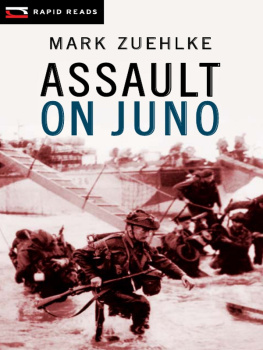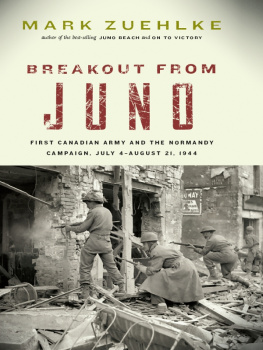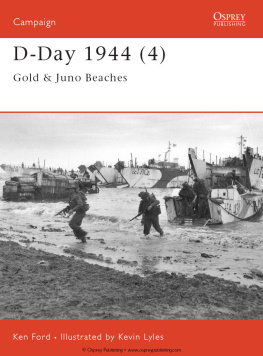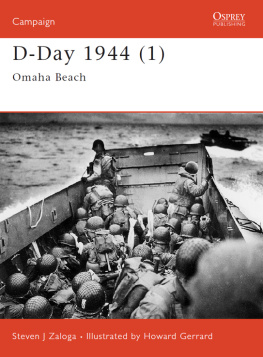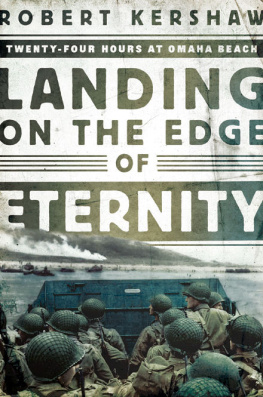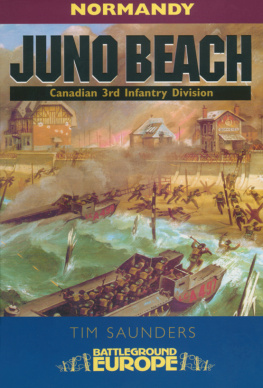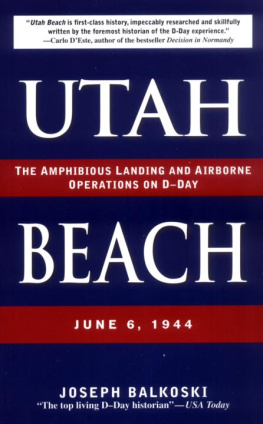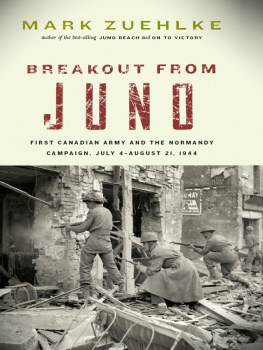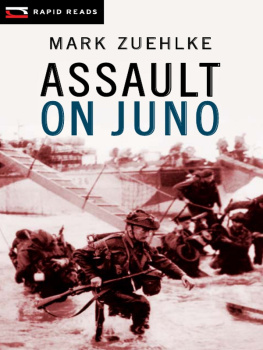ASSAULT
ON JUNO
MARK ZUEHLKE

Copyright 2012 Mark Zuehlke
All rights reserved. No part of this publication may be reproduced or transmitted in any form or by any means, electronic or mechanical, including photocopying, recording or by any information storage and retrieval system now known or to be invented, without permission in writing from the publisher.
Library and Archives Canada Cataloguing in Publication
Zuehlke, Mark
Assault on Juno [electronic resource] / Mark Zuehlke.
(Rapid reads)
Electronic monograph.
Issued also in print format.
ISBN 978-1-4598-0037-3 (PDF).--ISBN 978-1-4598-0212-4 (EPUB)
1. World War, 1939-1945--Campaigns--France--Normandy. 2. Canada. Canadian Army--History--World War, 1939-1945. 3. Readers (Adult). 4. High interest-low vocabulary books. I. Title. II. Series: Rapid reads (Online)
D756.5.N6Z823 2012 940.5421421 C2011-907751-5
First published in the United States, 2012
Library of Congress Control Number: 2011943698
Summary: A dramatic account of the Canadian Forces attack on Juno Beach on D-Day, June 6, 1944a battle that began the march toward victory in World War II.

Orca Book Publishers is dedicated to preserving the environment and hasprinted this book on paper certified by the Forest Stewardship Council.
Orca Book Publishers gratefully acknowledges the support for its publishing programs provided by the following agencies: the Government of Canada through the Canada Book Fund and the Canada Council for the Arts, and the Province of British Columbia through the BC Arts Council and the Book Publishing Tax Credit.
Design by Teresa Bubela
Cover image by Getty Images (Hulton Archive/Stringer)
Maps by Stuart Daniel, Starshell Maps
ORCA BOOK PUBLISHERS
PO BOX 5626, Stn. B
Victoria, BC Canada
V8R 6S4 | ORCA BOOK PUBLISHERS
PO BOX 468
Custer, WA USA
98240-0468 |
www.orcabook.com
Printed and bound in Canada.
15 14 13 12 4 3 2 1
In memory of my father,
Charles Walter Zuehlke (19202011).
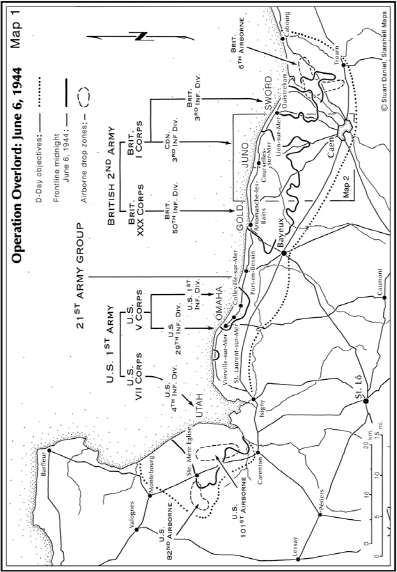
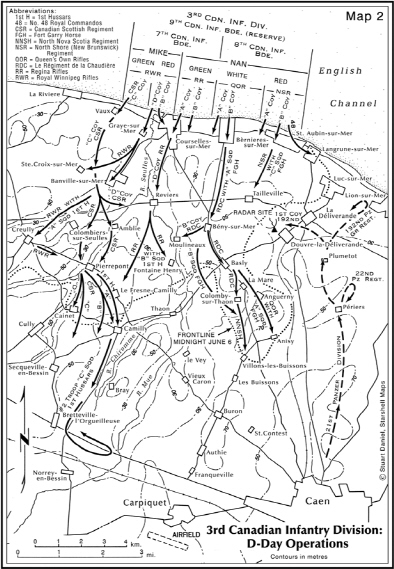
CONTENTS
O n June 6, 1944, the largest amphibious invasion in history took place on the coast of Normandy in France. The previous night, 5,000 ships carrying 131,000 Allied soldiers had sailed into position. Also during the night, 23,000 more troops had landed by parachute or glider. With the dawn, the soldiers at sea would begin to land on five beaches. The 3rd Canadian Infantry Division and 2nd Canadian Armored Brigade would land on Juno Beach. On either side of the Canadians, British troops would set down on Gold and Sword beaches. To the west of Gold Beach, Americans would storm ashore at Omaha and Utah beaches.
Code-named Operation Overlord, the Allied invasion had been in the planning for four years. Really almost from the moment that Germany had seized all of continental Europe and driven the British off. War had broken out in September 1939 with the German invasion of Poland. It had only taken nine months from then for Germany and its alliesItaly and Hungaryto conquer the rest of mainland Europe.
But Britain had held out. For almost two long years it fought on alone. Alone, except for the support of its Commonwealth nations chiefly Canada, Australia, New Zealand and India. Then, on December 7, 1941, the Japanese attacked Pearl Harbor in Hawaii and destroyed most of the battleships of the powerful American Pacific Fleet. This drew the United States into the war on the side of Britain, while Japan allied with Germany.
Within weeks of America entering the war, its military planners joined the British discussions on how to launch an invasion of continental Europe. In August 1942, a small raid was attempted at Dieppe. Most of the troops involved were Canadian. The raid on the small French resort town was a disaster. Hardly any soldiers got beyond the beaches. Total casualties were 3,367. This included 901 killed and 1,946 taken prisoner. These losses were all suffered in just nine hours.
Dieppe proved to the Allied planners that they were a long way from ready to invade France by crossing the English Channel. Yet they also knew that this was the best path of approach. But before an invasion could take place, they needed to build up a huge army in England. They also needed a vast armada of ships and much special equipment.
In the meantime the war went on. The Allies landed American and British troops in French North Africa on November 8, 1942. This led to the eventual defeat of the German Afrika Korps on May 12, 1943. The struggle in North Africa had raged for thirty-two months.
The Allies kept the pressure on Germany by invading Sicily on July 10, 1943. Included in this invasion force was 1st Canadian Infantry Division and 1st Canadian Armored Brigade. Sicily fell on August 17 after hard fighting. Less than three weeks later, the Allies jumped from Sicily onto the Italian mainland. Canadian, British and American troops started marching north into boot-shaped Italy. They faced bitter resistance from German troops, who had hurriedly occupied the country when the Italian government surrendered to the Allies days after the Allies landed on the mainland.
For a short time the Allies had hoped it might be possible to defeat Germany by advancing through Italy into the heart of Europe. British prime minister Winston Churchill called this an attack on Europes soft underbelly. It was soon clear that the underbelly was anything but soft, and that it would take years of slogging to get from Italy to Germany.
This added urgency to the plan to launch an invasion across the English Channel. So from the autumn of 1943 to the spring of 1944, the Allies gathered their strength in southern England. By late May they were ready. The French province of Normandy had been selected for the invasion because its many sandy beaches were not as well defended as those farther east and closer to England. Allied fighter planes had gained complete mastery of the skies over the European coast. Allied bombers were destroying railway terminals and vital roads leading to Normandy. The entire region was soon isolated from the rest of Europe.
The date of June 6 was selected because of the way the moon affected the levels of incoming tides. At this point in the monthly lunar cycle the tide was considered perfect for putting soldiers, tanks, artillery and vehicles ashore. If the invasion did not proceed on that day, it would have to be delayed for months. Despite a storm, the weather was deemed acceptable. And so, in the predawn hours of June 6, 1944, about 14,500 Canadians were aboard ships off Juno Beach. With the dawn, they would storm ashore. This is the story of what happened on the day forever to be known as D-Day.
A coin toss decided it. Two of the four Queens Own Rifles companies would be part of the assault on Juno Beach. The four company commanders tossed coins to decide who would have the honor. The Dalton brothers won. They would each have the honor of leading the charge. But likely one or both would die. Majors Charles and Elliott Dalton were both brothers and close friends. Charles, commander of B Company, was six years older and considered it his job to protect Elliott. The fact was, Elliott should not have been in the coin toss at all. But when A Companys commander fell ill at the last moment, he replaced the man.
Next page
